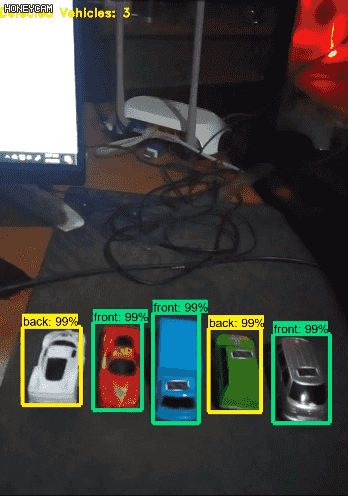Dodge The Cars

Overview
An interactive game developed using opencv3 and python3. User can control the player by moving any blue object in front of camera. The camera will detect the object from background by image processing and calculate it's angle and movement and change the position of the player car accordingly.
Key Features
- • Use of OpenCV Library: Used OpenCV library for performing real-time blue color segmentation via HSV thresholding and contour detection to compute object centroid; updates directional movement flags based on position;
- • Full-fledged playable game: Developed a game loop using the PyGame library, featuring a car selection system and binary-based high score saving mechanism.

